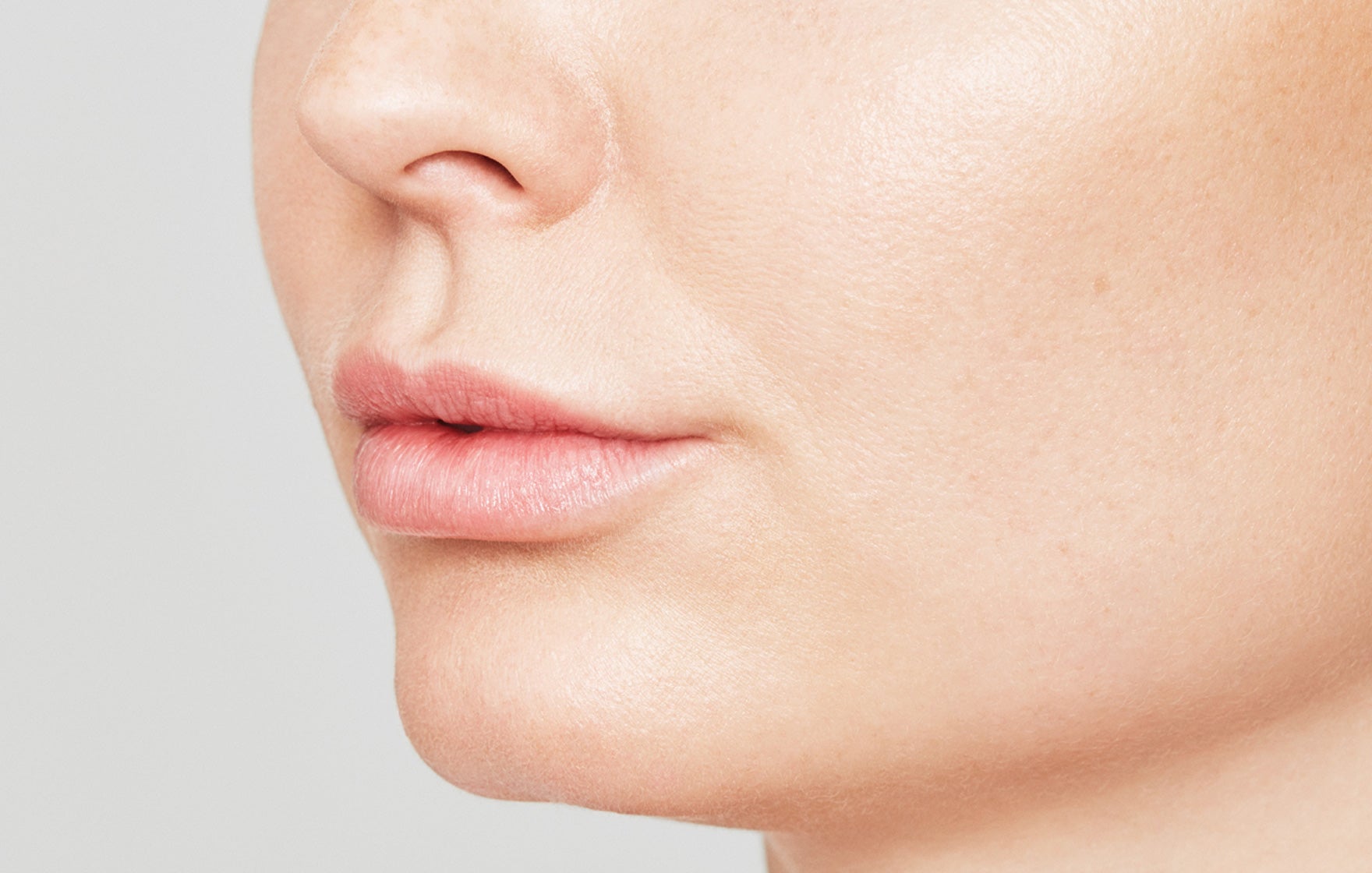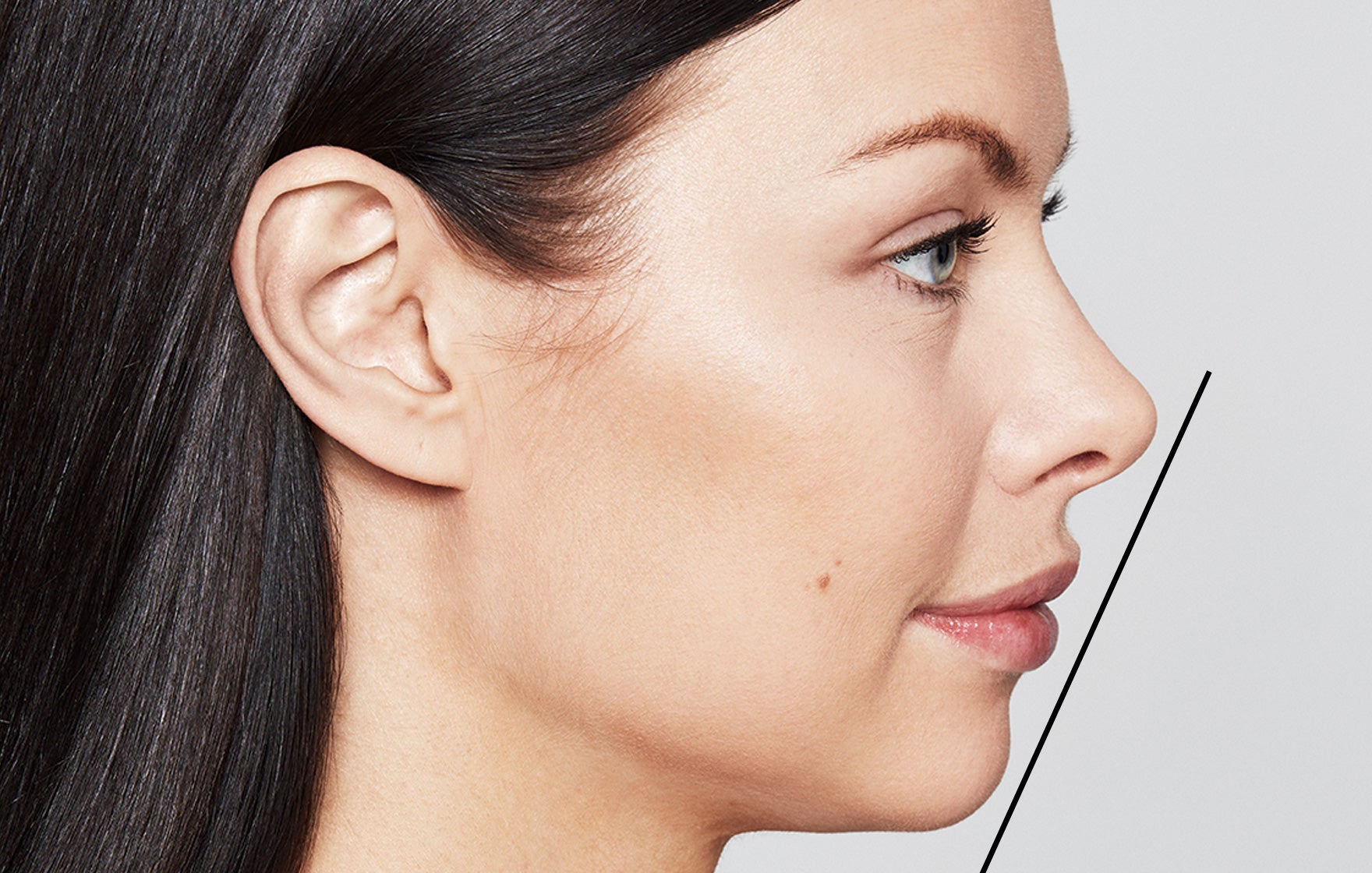
Lip fillers are not only for young people who want plump lips. They can also be used to restore aging and thin lips. Also, fillers can give the whole area around the mouth a more youthful appearance, for example by reducing lip lines or smoker’s lines or reduce the appearance of oral commissures (the downward pointing lines at the corners of the mouth). Read about what you can actually do to treat aging and thin lips, smoker’s lines, lip lines and more!
Treating aging and thin lips with lip fillers
The lips and the whole area around the mouth change in many different ways as we age. If you are considering a treatment with lip fillers for aging and thin lips, or to reduce lip lines or smoker’s lines, it can be good to have some basic knowledge about lips and the area surrounding the lips.
Anatomical changes that affect the lips
As we age, our face and skin go through many changes. Although the mechanism of aging is not fully understood, we can easily notice the changes, not least around the mouth (the peri-oral region). Thin lips, lip lines, smoker’s lines and oral commissures are typical signs of aging in the peri-oral region.
One reason for these changes is the loss of elasticity of the skin.1-2 Another reason is the loss of collagen, a protein that forms the skin’s support structure. Less collagen leads to thinner and structurally weakened skin.3-4 In addition, as we age, the amount of hyaluronic acid in the skin decreases. Hyaluronic acid is a polysaccharide, a form of sugar molecule, that binds large amounts of water.5 It keeps our skin – and lips – plump and hydrated. With less hyaluronic acid, our skin becomes drier, and it can also lose its natural glow.1-2 All of these changes will affect the lips and the peri-oral region, resulting in thin lips, lip lines, smoker’s lines and more pronounced oral commissures.
An elongated upper lip and thin lips
The signs of aging in the peri-oral area are for many people most notable in the upper lip.
When scientific papers discuss the upper lip, what they refer to is not only the lip itself, but the whole area below the nose, to the vermillion border (or lip border) and of course the actual upper lip. The upper lip is of most interest when investigating age-related changes, since sagging is more noticeable here than in the lower lip.6
A study using magnetic resonance imaging compared the lips of younger people with the typically thin lips of older people. In the study, the participants were divided into two age groups, one between 20 to 30 years of age and the other between 65 to 80 years. It turned out that the upper lip (the whole area below the nose including the actual upper lip) was almost 20% longer in the older group. The upper lip volume was up to 40% less among the older participants and they also had a 25% thinner lip. In other words, the difference was quite substantial. 7
Another typical change to the upper lip that comes with age is a loss of definition of the cupid’s bow, the vermillion border and the philtrum columns (the “number eleven” below your nose).6
Changed proportions of the lips
With aging, the proportions of the lips will also change. The ideal proportion of the lips, what people in general find aesthetically pleasing, is when the volume of the upper lip is slightly smaller than the lower lip. More specifically, the ideal proportion is 1:1.618 (the so-called golden proportion, known to philosophers and scientists since ancient Greece). 6 Of course, the preferred proportion also varies depending on ethnicity and personal taste.
The most aesthetically preferred proportion between the upper and the lower lip is when the volume of the upper lip is slightly smaller than the lower lip with a ratio of 1:1.618. Here, Cassandra has had a very natural and proportionally performed lip filler treatment with Restylane® KYSSE™.
Another important proportion can be seen in profile. The proportion that most people think is most beautiful is when the upper lip protrudes 1-2 mm more (further anterior) than the lower lip.6
Here, Irina has had a lip filler treatment with Restylane® KYSSE™. As can be seen in the image, her upper lip protrudes slightly more than her lower lip, which is generally considered the aesthetically ideal shape.
Reshaping aging and thin lips with lip fillers
Lip fillers can be used to restore and reshape aging and thin lips, not least a thin upper lip. However, a treatment with lip fillers is not only about volumizing the lips. As there are so many different changes that take place with aging, you cannot just “stuff” your lips with lip fillers. Aesthetic treatments with lip fillers should recreate the shape and definition that has been lost with time to the whole area around the lip, which includes more than just adding volume in the lips themselves. With lip fillers, you can recreate the philtrum columns, make the vermillion border more pronounced, reduce the appearance of lip lines, smoker’s lines, oral commissures and much more.
Lip fillers must provide a natural result to the whole area around the mouth
The area around the mouth is a very animated part of the face. When having a treatment with lip fillers for aging and thin lips, or to reduce lip lines or smoker’s lines, most people want the result to look natural. This means that the lip filler treatment should provide a result that looks natural also when you move your lips and face, such as when you talk, smile, and kiss.
Moreover, as mentioned above in this article, not only the lip itself goes through changes with age but also the whole area around the mouth. For example, oral commissures can appear. Lip lines, smoker’s lines, or more prominent wrinkles can extend outside of the actual lips. Furthermore, nasolabial folds can give the area an aged appearance. Just as with the lips, the peri-oral area is very dynamic. Lip fillers and fillers for treating smoker’s lines and lip lines must be carefully selected, since they must be able to integrate in the tissue to look natural also in the animated face.
Treating thin lips with Restylane® KYSSE™
A lip filler that has been specially developed to create lips that both look and feel natural is Restylane® KYSSE™. The naturalness of Restylane® KYSSE™ has even been evaluated in a clinical “kissability” study, with very good results. All participants, 100%, thought the lip fullness had improved and 96% thought their lips looked natural. Moreover, 98% were satisfied with the kissability of their lips after the lip filler treatment.8
Treating the peri-oral area with Restylane® REFYNE™ and Restylane® DEFYNE™
Two other fillers that can be used for the peri-oral area are Restylane® REFYNE™ and Restylane® DEFYNE™.9 Both fillers have a certain degree of flexibility to suit this dynamic area.
The naturalness of expression after treating nasolabial folds and other lower face wrinkles with Restylane® REFYNE™ and Restylane® DEFYNE™ has been evaluated in a clinical study. The investigators used both photos and video to evaluate the naturalness of expression after treatment, for example when the participants smiled, pursed a kiss, blew out a candle and made a big smile. For 95% of the participants, naturalness of expression was either maintained or enhanced after treatment.10
Consult a qualified healthcare practitioner
If you are considering a treatment with lip fillers to restore aging and thin lips or to reduce smoker’s lines or lip lines, or if you want to rejuvenate the whole area around the mouth, make sure to consult a qualified healthcare practitioner. He or she will know how to treat your lips and the area around the mouth to create the best possible result.
References
- Finn CJ et al. Dermatol Surg 2003;29(5):450–455.
- Matsubara et al. Skin Res Technol 2012;18(1):29–35.
- Farage MA et al. Adv Wound Care (New Rochelle) 2013;2(1):5–10.
- Quan T and Fisher GJ. Gerontology 2015;61(5):427–34.
- Cowman MK, Matsouka S. Carboh Research 2005;340: 791–809
- Tonnard PL. et al.; Plast Recon Surg: 2019; 143(5):1333-1342
- Ramaut L. et al.; Plast Recon Surg: 2019; 143(2):440-446
- Nikolis A. et al.; Poster presented at IMCAS, France, Feb 2020.
- Restylane® Refyne™ Instructions For Use; Restylane® Defyne™ Instructions For Use
- Philipp-Dormston WG et al. Dermatol Surg 2018;44(6):826-832.

